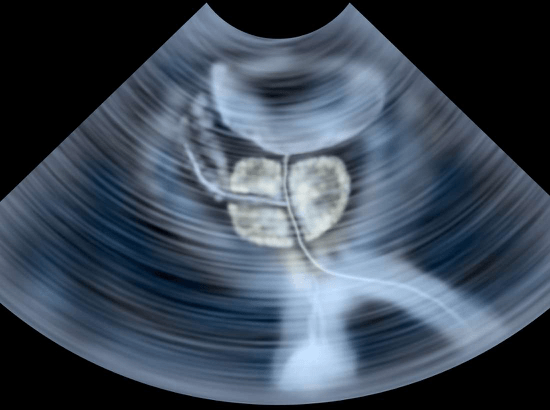With the emergence of minimally invasive techniques for the treatment of benign prostatic hyperplasia and the need to reduce health care costs, a simple, local and effective anesthetic injection of the prostate can be used to perform more procedures in a minor surgery room. According to studies of neuroanatomy of the prostate, the perineal approach with ultrasound, seems to be the best way to anesthetise the prostate; the prostatic block is therefore effective for the control of pain.


Who are the candidates for a perineal prostatic block?
- Patients who will undergo a transperineal biopsy of the prostate
- Patients who will undergo REZUM treatment of the prostate
- Patients who will undergo internal urethrotomy
- Men who suffer from chronic pelvic floor pain
How does a perineal prostatic block take place?
The patient will be lying on his back, with his legs elevated in stirrups to expose the perineal area. Dr. Marois will introduce an ultrasound probe in the endorectal cavity, to visualize where he will perform the infiltration. The superficial perineal area will first be disinfected with Proviodine so that Dr. Marois can proceed with the aesthesia of the perineal region, with minimal risk of infection. The cutaneous layer of the perineal skin will be infiltrated by a local anesthetic in a rectangular manner and with a triangular extension, just above the anus. A large spinal needle will finally be introduced thru that anesthetised area, in order to reach the deeper peri-prostatic tissues with another anesthetic mixture.


